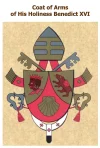A new product is nearing release: The CredenShell!!!!
Here at Amarillo Fletcha, Inc, we are obsessed with shearing every tiny micro-gram possible to lighten your backpack's load. We know that one method to help you with that goal is to combine separate items into a single multi-tasker.
So after 50 years of research, and millions of dollars in development, we now have a terrific multitasker with the new CredenShell that will help with the "My backpack is the lightest" competition.
Our CredenShells go through a rigorous pre-production, production, mid-production, Siesta Pause Production, and post-production process.
We employ only the finest graffiti vandals on the Caminos, dragging them into our sweatshops kicking and screaming after catching them tagging km markers. Plus we carefully select only the highest grade China Store permanent markers in order to hand-draw all of the blank Sello Squares on our scallop shells.
You will be proud to carry your very own Scallop Shell Sello Collector, because you are helping to save the Amazonian Rain Forest trees from being turned into paper credencials.
As an added bonus, your CredenShell comes personalized with an imprinted trail name, like "Snory Dory" or "Shower Shy Sam" or "Blistering Bill" or "Rice Cooker Rita".
Your CredenShell's tree-saving, virtue signaling superiority will assure you of always getting the Bottom Bunk, as hospitaleros nod at you with knowing approval while stamping your CredenShell.
Lesser pilgrims will hear the hospitaleros as they tell you,"Saving trees AND having the ultralightest of backpacks?. . . you've come a long way, and have done well for yourself, Pilgrim." You will then be awarded control of the kitchen, and given the honor of skinning Griz for that evening's meal.
Pre-orders are now being accepted for an October, 2422 estimated delivery. Transporters will be used to beam your order right to your master bathroom. Be sure to fill in the exact coordinates on the order form.
But Wait, There's More: We will also include a modification to make your CredenShell even BETTER for the environment. We call this feature, "I'm Pooped".
Now, you can leave the weight of carrying TP at home. That means an even lighter backpack, while you are saving all the trees in the world from Mr Whipple's chain saw. Plus, you don't need a separate trowel to bury your Baby Ruth's while gophers derisively giggle at you.
Once your bottom line business is complete, it is a simple process to Scrape, Dig, and Cover. Just be careful how much Scraping pressure you apply to those sensitive areas, because the CredenShell's edges can be sharp.
Once completed, use your Water Reservoir - or bottles - to rinse off the CredenShell in preparation for the next Sello.
For suggestions and comments, please give us a call at +1-666-Idon'tcare.
From Amarillo Fletcha, Inc, we wish you well on your journey.
 but here goes...
but here goes...


























